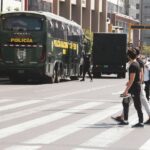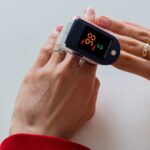Ah, New York traffic. It’s as iconic as the Empire State Building, and about as predictable. Anyone who’s ever driven (or been stuck in a cab) in the Big Apple knows the frustration of watching minutes – sometimes hours – melt away in a sea of brake lights. But beyond the personal annoyance, this gridlock is a major economic drag, costing the city billions each year. So, what can be done to untangle this mess and get New Yorkers moving again?
A Symphony of Stalls: Why New York Traffic is a Nightmare
There’s no single culprit behind New York’s traffic woes. It’s a perfect storm of factors, all working together to create a symphony of stalls. One major contributor is the sheer density of people and vehicles. With over 8 million residents crammed onto a tiny island, there just isn’t enough space for everyone to move freely. As a report by the NYC Department of Transportation itself admits, “New York City’s street network was not designed for the volume of traffic it experiences today.”
On top of that, New York boasts a robust public transportation system, which is a good thing – except when it spills over onto the streets. Double-parked delivery trucks, taxis jockeying for fares, and tourists lost behind the wheel all contribute to the chaos. A study by AAA [American Automobile Association] found that the average New York driver spends a whopping 89 hours stuck in traffic each year. That’s a time-suck of epic proportions, translating to lost productivity, wasted fuel, and a collective sigh of frustration echoing across the five boroughs.
Beyond the Gridlock: The Ripple Effects of Traffic
The impact of New York traffic goes far beyond the individual driver’s experience. Businesses are affected too. Delivery delays caused by congestion can hurt a company’s bottom line. Imagine you run a small bakery in Brooklyn. If your delivery truck gets stuck in rush hour traffic for an hour, that could mean missed deliveries, frustrated customers, and lost sales. This domino effect ripples throughout the city’s economy.
Public health also takes a hit. Traffic congestion is a major contributor to air pollution, which can exacerbate respiratory problems like asthma. A study by Columbia University linked increased traffic congestion to a rise in emergency room visits for asthma in New York City. So, the time spent sitting in traffic isn’t just frustrating, it can also be detrimental to the health of New Yorkers.
Paving the Way for Progress: Solutions to Consider
Thankfully, there’s no shortage of ideas on how to improve New York traffic. One solution gaining traction is congestion pricing. This involves charging drivers a fee to enter certain areas of the city during peak hours. The idea is to discourage unnecessary driving and raise revenue that can be reinvested in public transportation. While unpopular with some drivers, a similar system has been successfully implemented in London, significantly reducing traffic congestion.
Another approach is to invest in infrastructure improvements. This could include adding dedicated bus lanes, improving traffic signal timing, and creating more pedestrian-friendly areas. Imagine a scenario where buses whiz through designated lanes, unaffected by the gridlock plaguing car traffic. This would incentivize more people to use public transportation, further reducing the number of vehicles on the road. Additionally, the city could explore innovative solutions like autonomous vehicles, which could potentially reduce traffic jams by following designated routes and communicating with each other.
Technology can also play a role. Apps that provide real-time traffic updates can help drivers avoid congested areas. Expanding the city’s bike-sharing program and investing in electric vehicle charging stations could further incentivize people to leave their cars at home. Imagine a network of bike lanes crisscrossing the city, allowing cyclists to navigate efficiently and avoid the frustration of New York traffic altogether.
Ultimately, improving New York traffic will require a multi-pronged approach. There’s no silver bullet, but by implementing a combination of congestion pricing, infrastructure improvements, and technological solutions, lawmakers can start to untangle the gridlock and get New York moving again. After all, a city that never sleeps shouldn’t have to spend half its time stuck in traffic. Imagine a New York where getting around is efficient, reliable, and even enjoyable. That’s a future worth investing in.
















